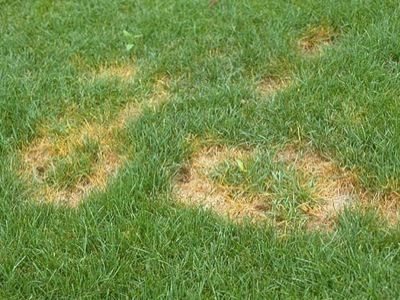Past Columns by The Lawn Coach. Lawn Tips, Lawn Advice and Lawn Care help for all your lawn care needs. by The Lawn Coach. Lawn Tips, Lawn Advice and Lawn Care help for all your lawn care needs.

The Patches of Summer
Q: I have a bluegrass yard (sod) about 10 yrs. old. I am currently treating it for summer patch that was confirmed by the local golf course people. Do you have any curative recipes you would recommend?
A: Summer Patch is actually a disease of the root system and contrary to the name, it occurs in the Spring, not the Summer. So, why is it called “Summer Patch”?
During the Spring when times are relatively easy, Summer Patch fungus attacks the roots of the grass in much the same way killer bees attack their hapless victims in a circa 1980’s horror flick. Well okay, so maybe the grass isn’t actually enjoying a romantic picnic lunch while the fungus lurks nearby plotting its attack for an absurdly long period of time as low bass notes hint at the upcoming carnage. Still, it’s a pretty effective visual, don’t you think?
The thing is though, since it is Spring when this happens, the temperatures are usually perfect for grass growth and the rains are plentiful. This means that a grass plant with a reduced root system is still likely to get plenty of water and nutrients. Because of this, everything appears hunky dory to the naked eye. Unfortunately, the grass is simply a ticking time bomb waiting for the fuse to ignite. Well, actually a bomb would hurt lots of things around it while the grass will just turn brown and fall over in those patches, but calling the grass a “limp spaghetti noodle” just didn’t seem to convey the imminence of the threat.
So, here you are entering into the Summer with a reduced root system. That’s what we scientific minded folks call “a bad thing.” Since the natural pattern of the fungus tends to be in circular, sometimes interlocking rings, this is the pattern in which you will see the grass dying as the Summer starts to crank up the pressures of heat and drought. Now you’re noticing the results of that Spring attack, but you’re wondering “what’s happening?”, when you should be wondering “what happened?”
Since the disease has already run its course, treating now is like trying to put out a fire when all that’s left is a pile of gray ash. Don’t waste the time, effort, or money in spraying chemicals into the environment that won’t help anyway. Instead, let’s attack the bees nest. When I say “bees nest”, I’m referring in this case to the thatch.
Thatch builds up in Kentucky Bluegrass pretty prolifically over the years. It also becomes the nurturing home to a huge variety of critters, including the microscopic fungi that cause Summer Patch. You’re going to have to get the thatch under control, and this cannot be done with chemicals. It CAN be done with a little elbow grease though.
My personal favorite plan of attack is to use a core aerator to punch holes everywhere through the lawn down to the soil. Next, spread a thin layer of topsoil back on top of the grass and brush it with a push broom or leaf rake down in between the blades of grass. The active microbes in the soil will now get REALLY active and will start breaking down that thatch for you. After a season or two, you probably won’t see Summer Patch bothering your nice Kentucky Bluegrass again. It’s kind of like when Arnold Schwartzenegger would blow up the enemy base camps while trying to rescue the Peace Corp volunteers in Zaire. Okay, well maybe not exactly.
Tuesday, August 26, 2008


